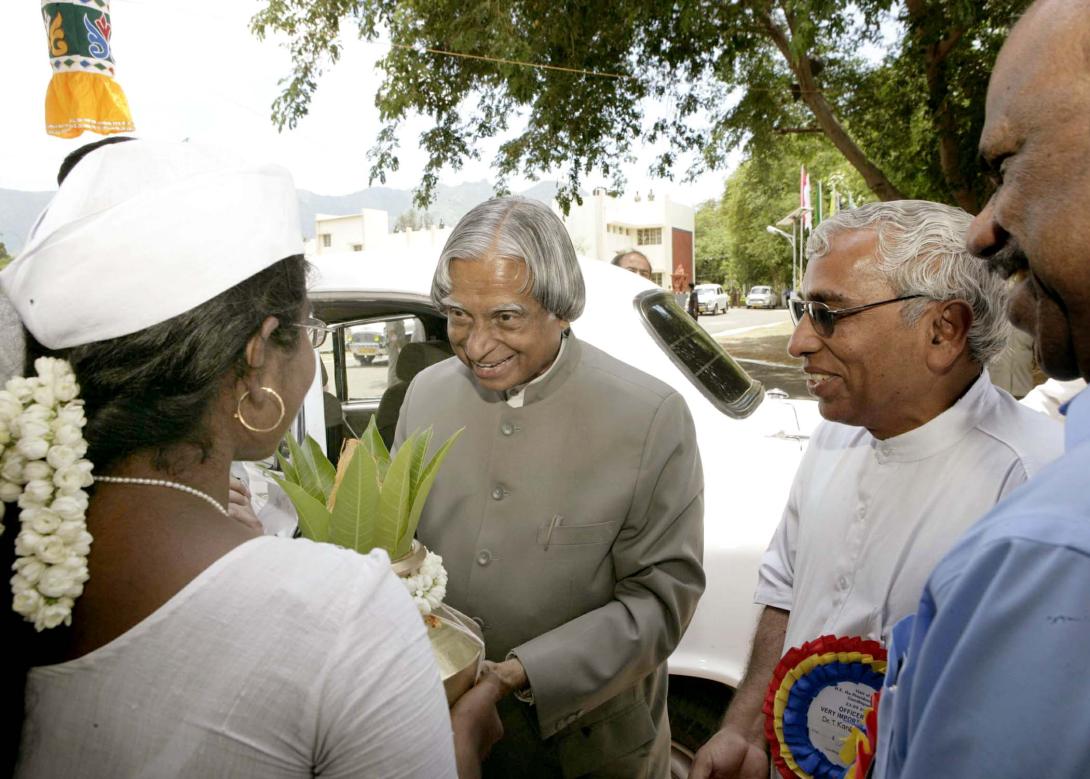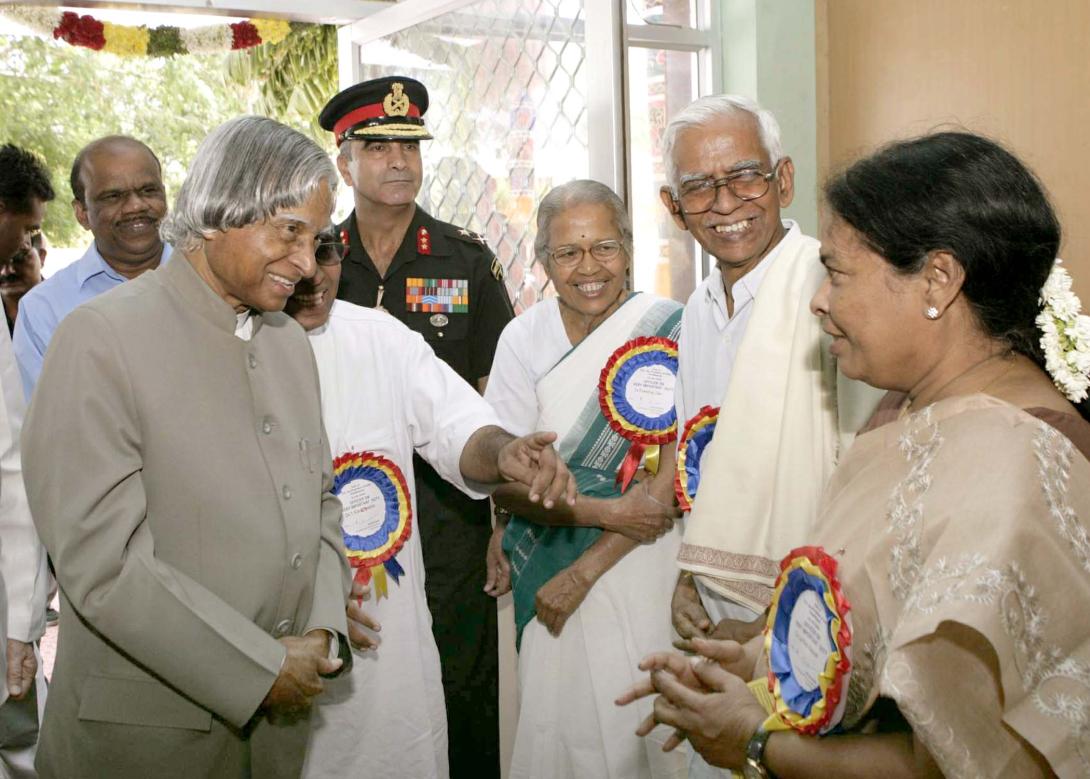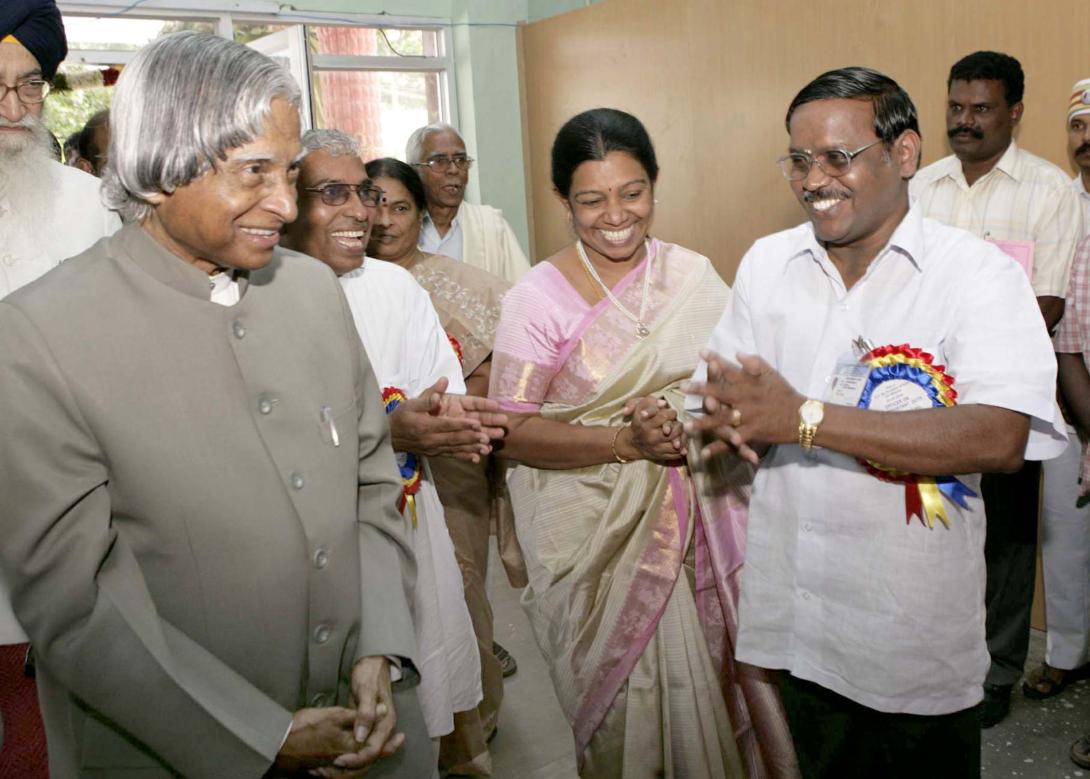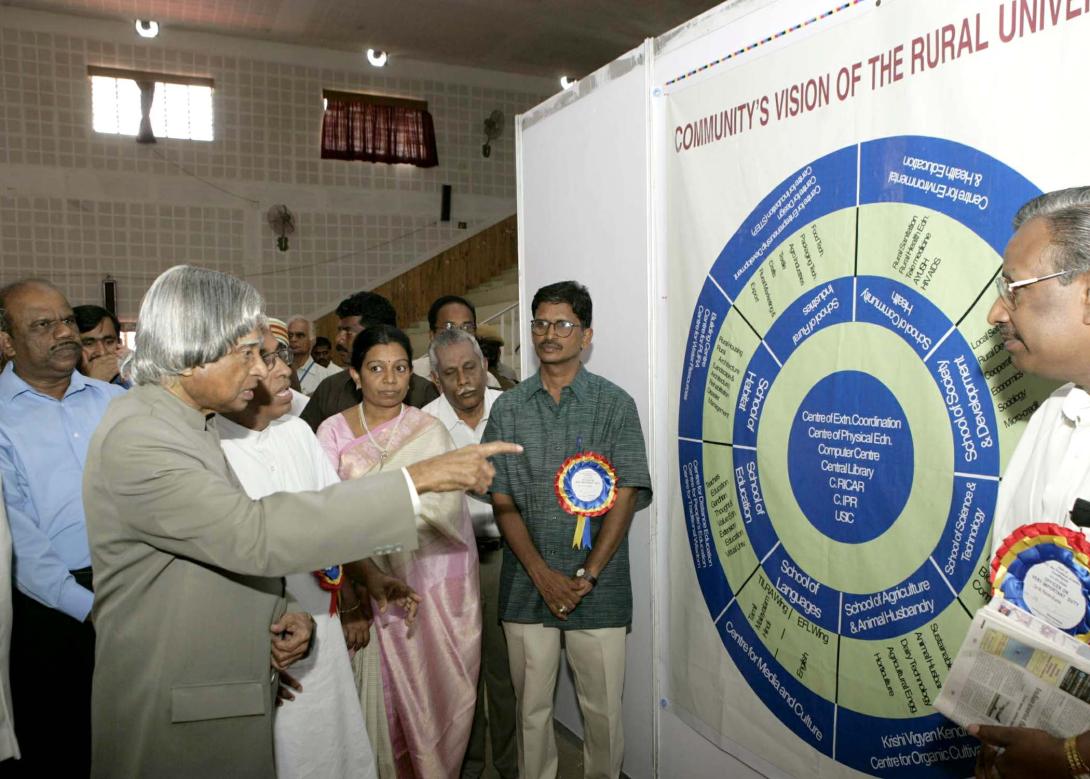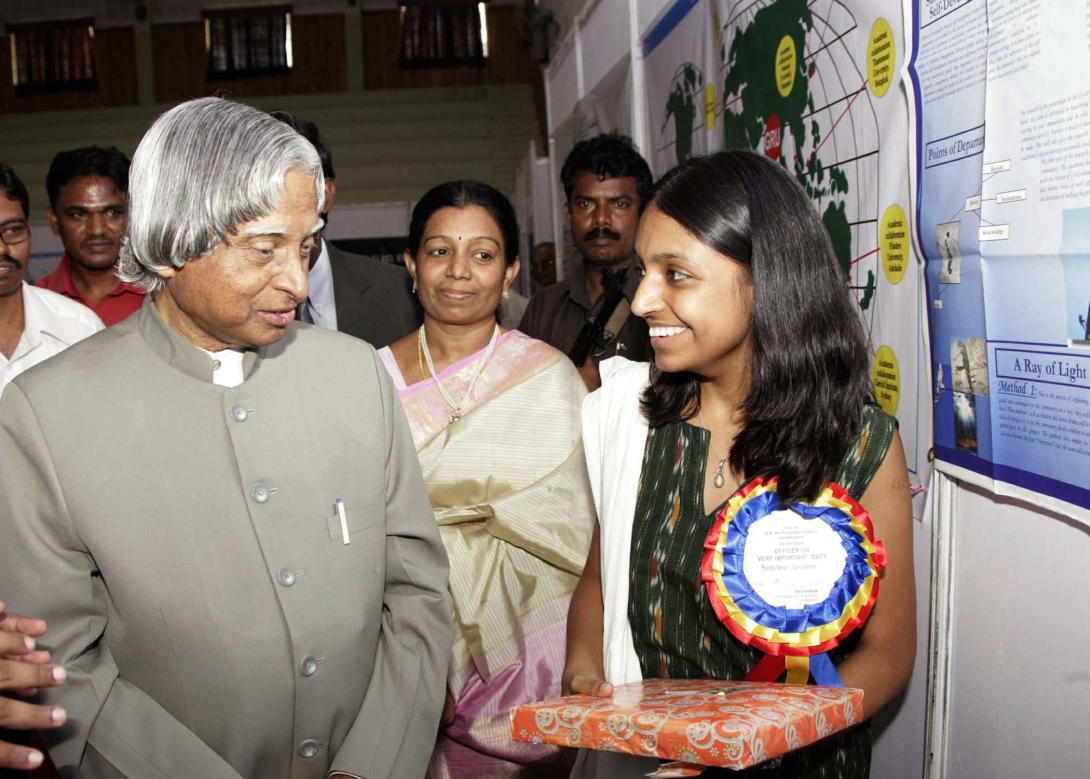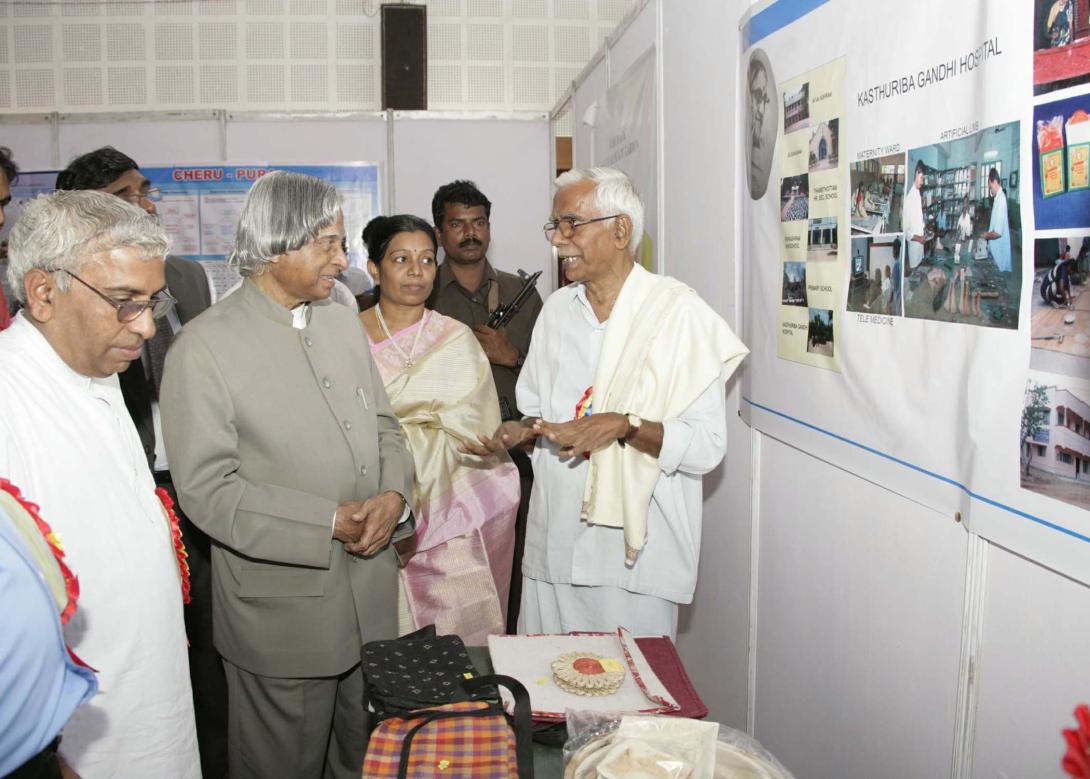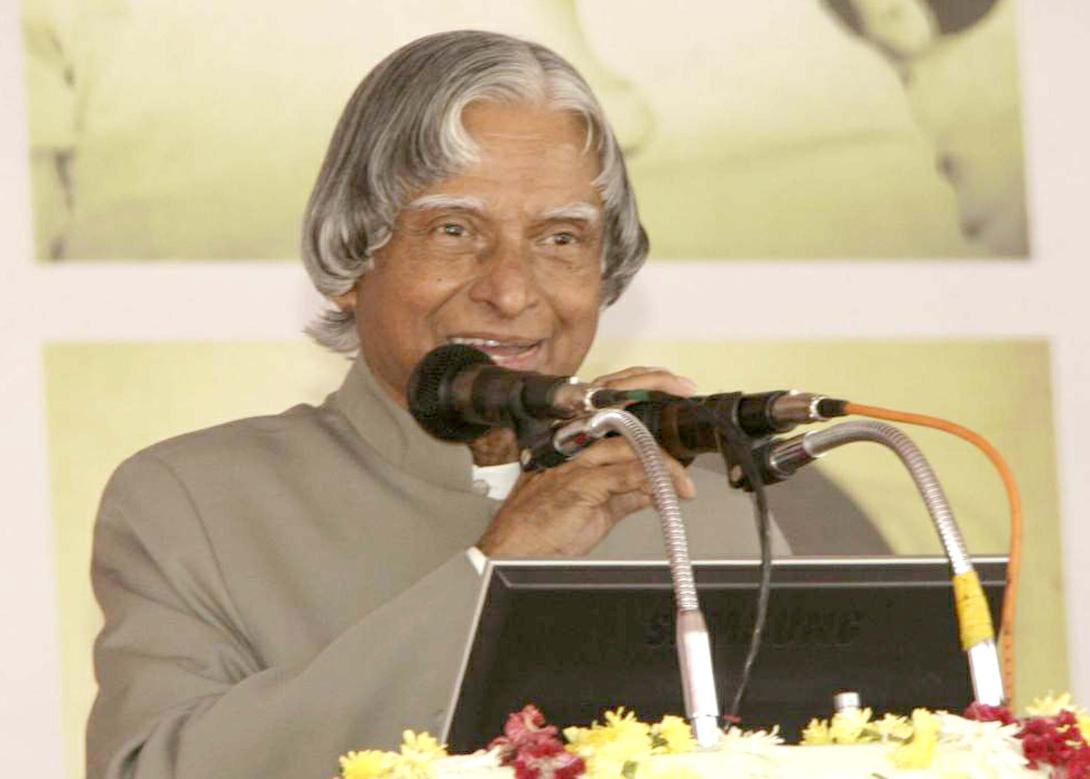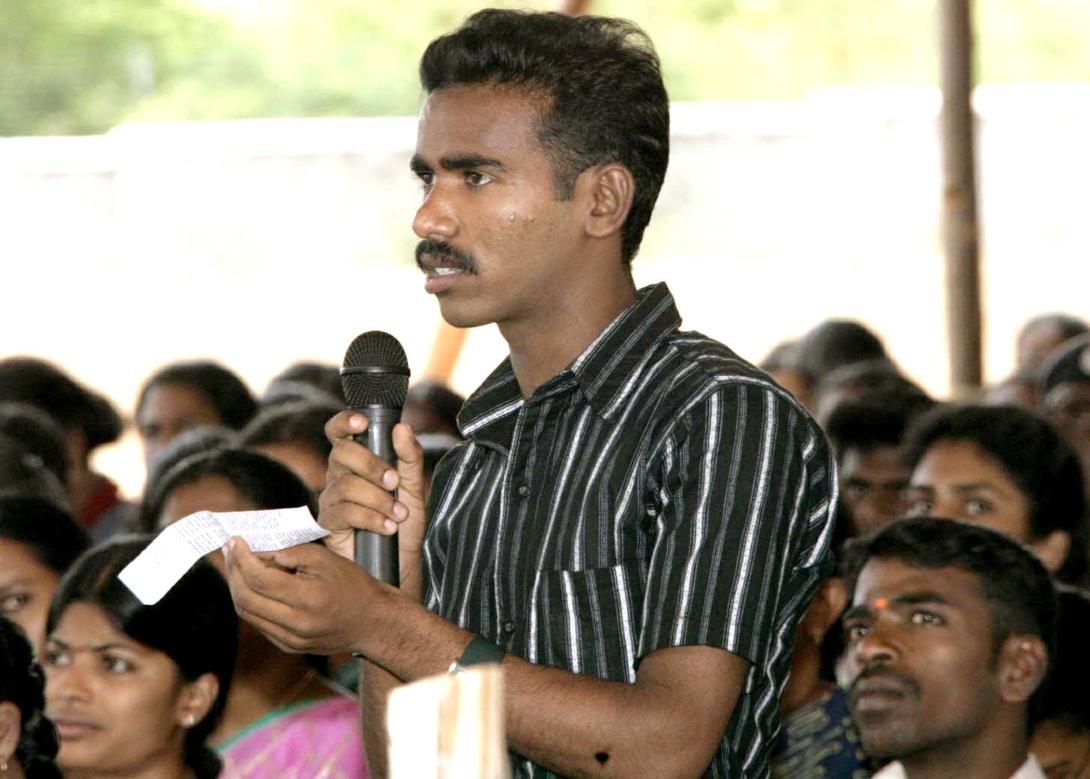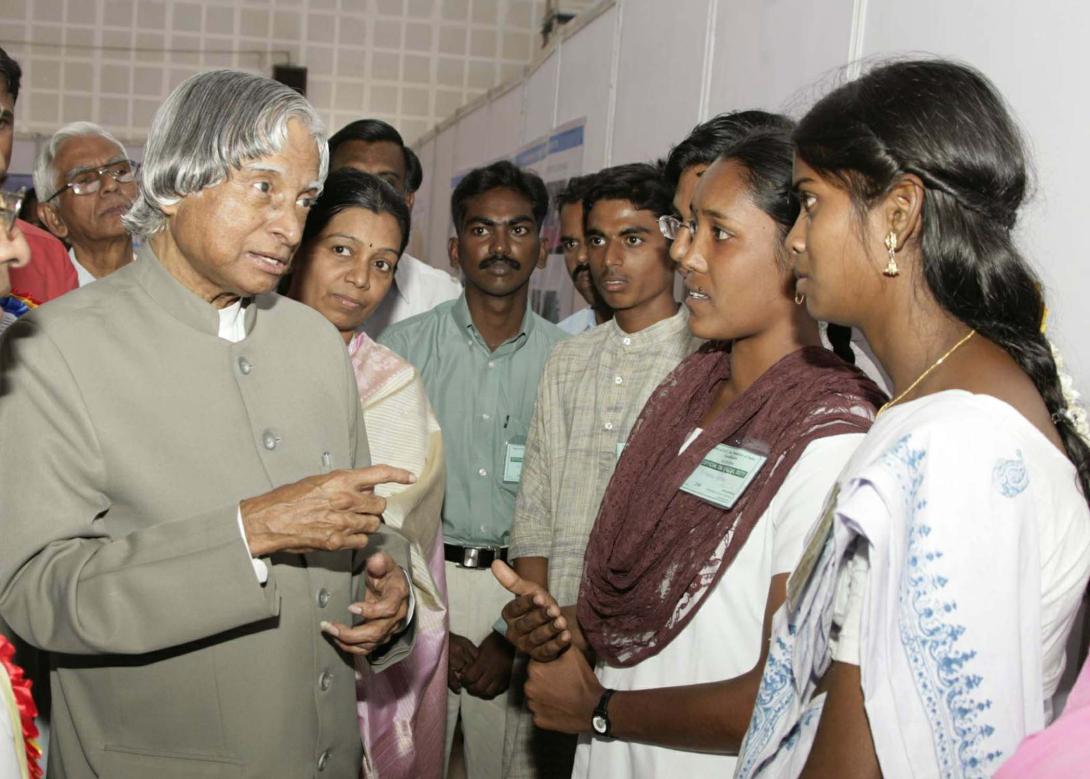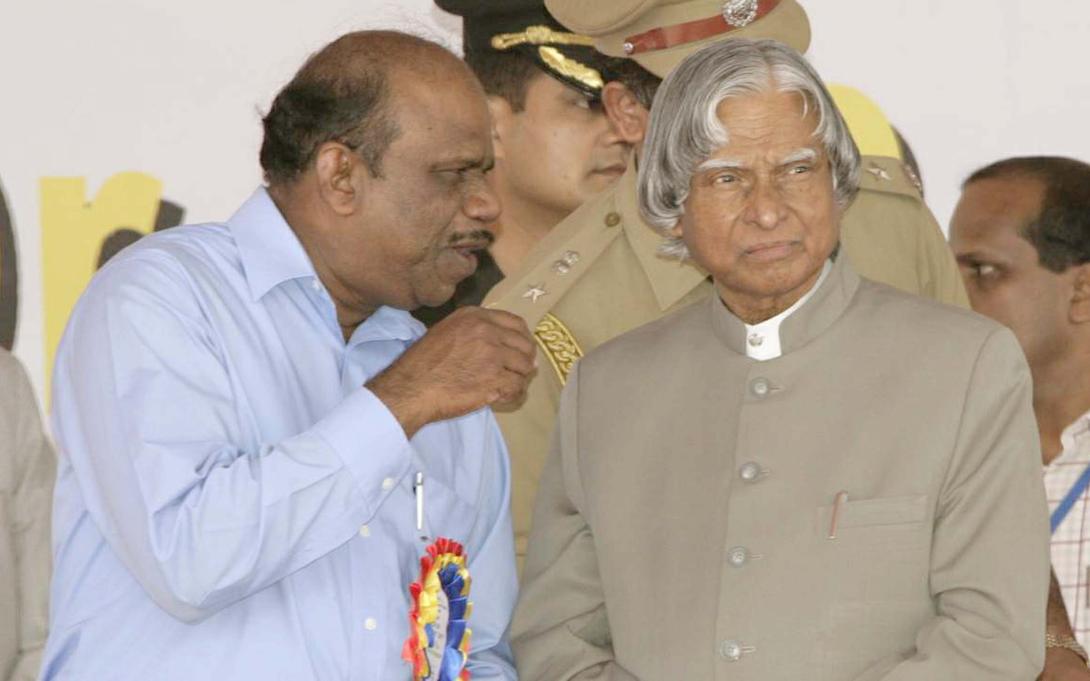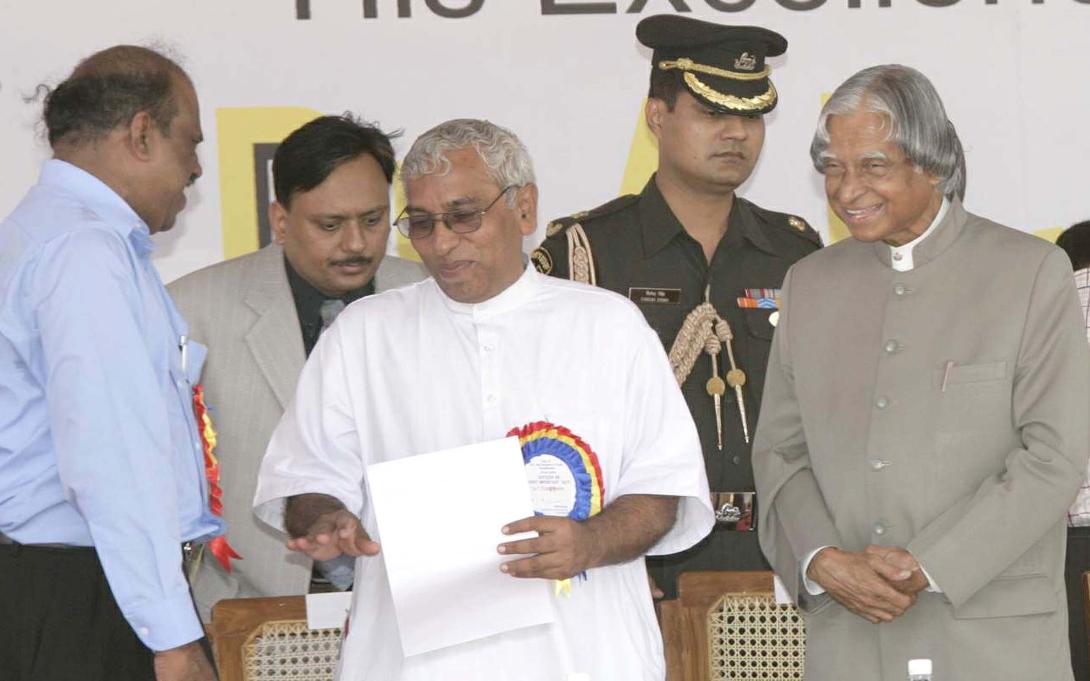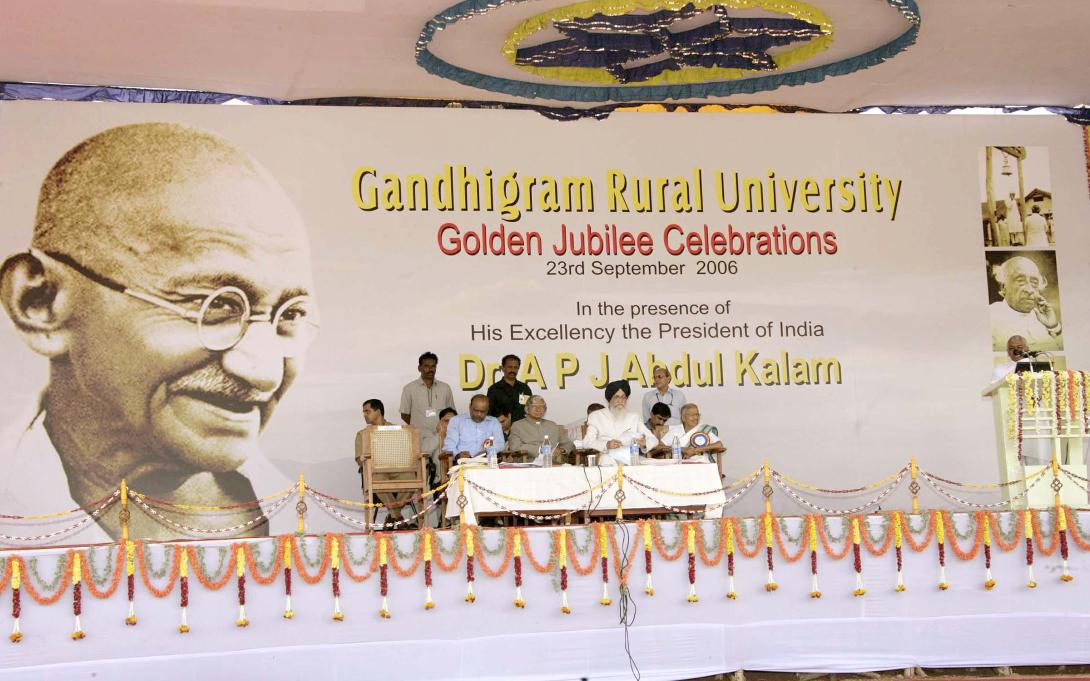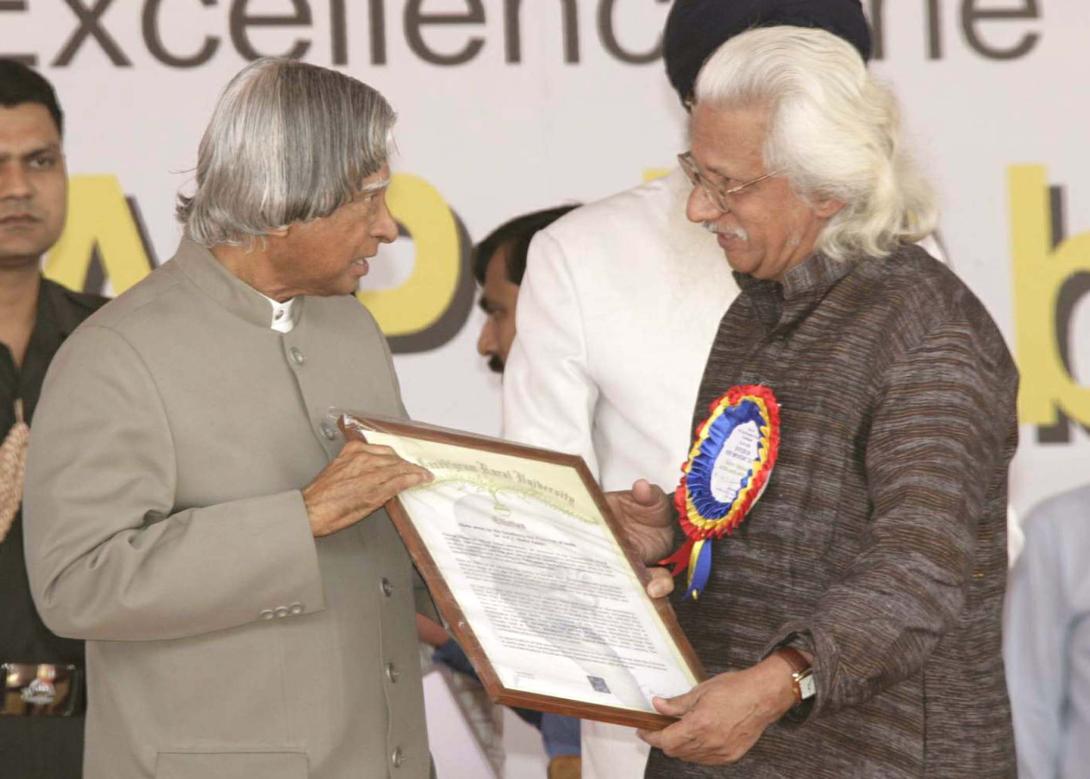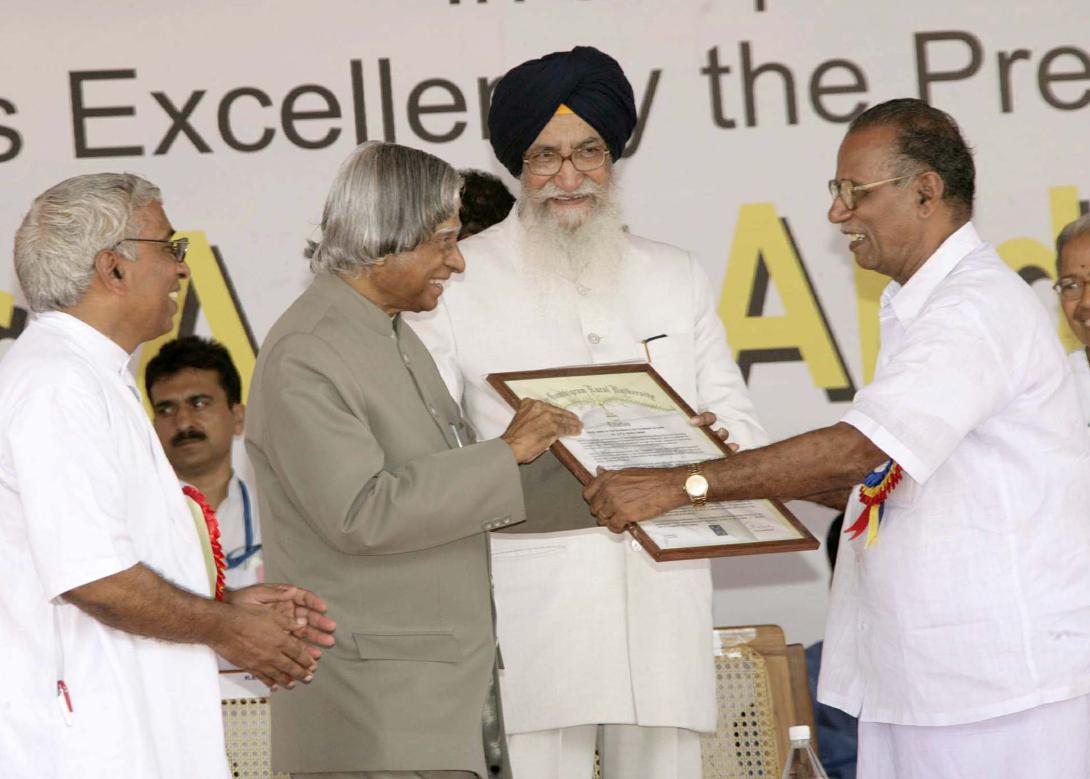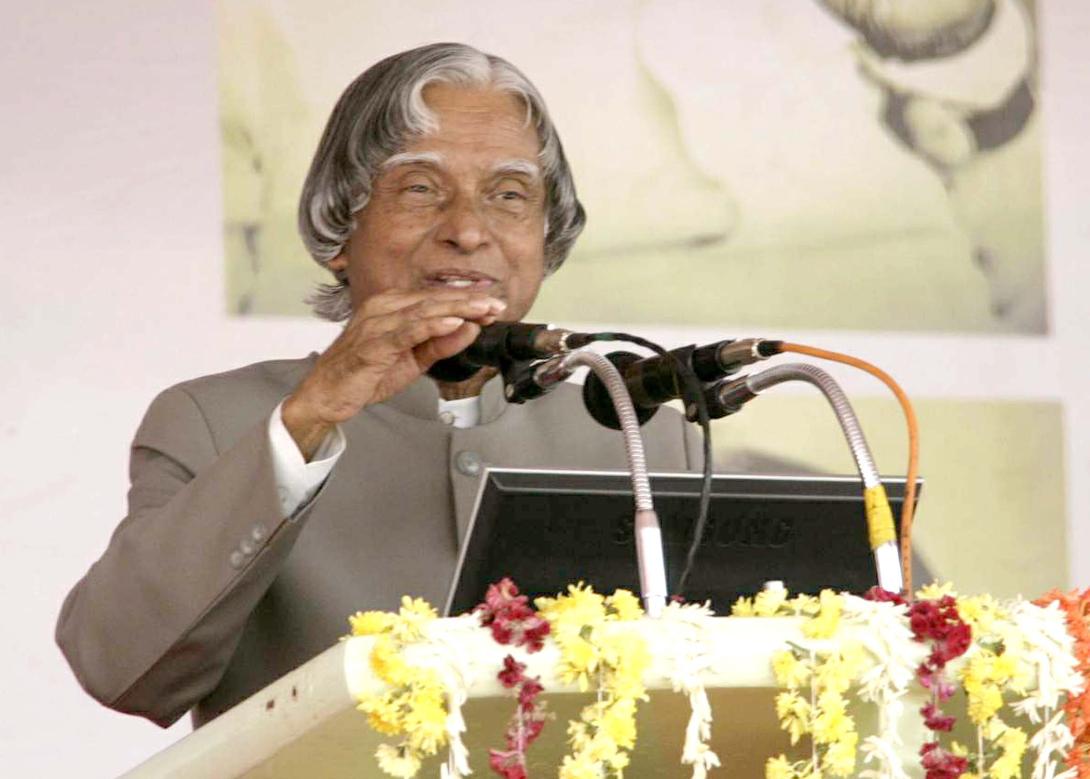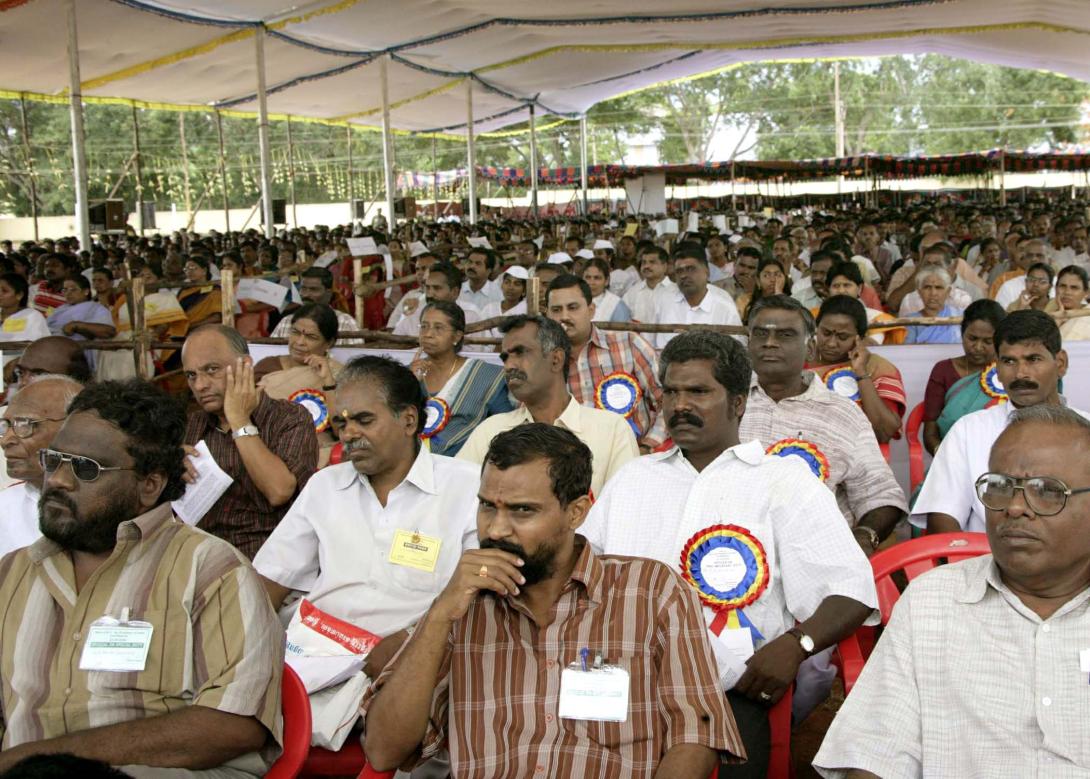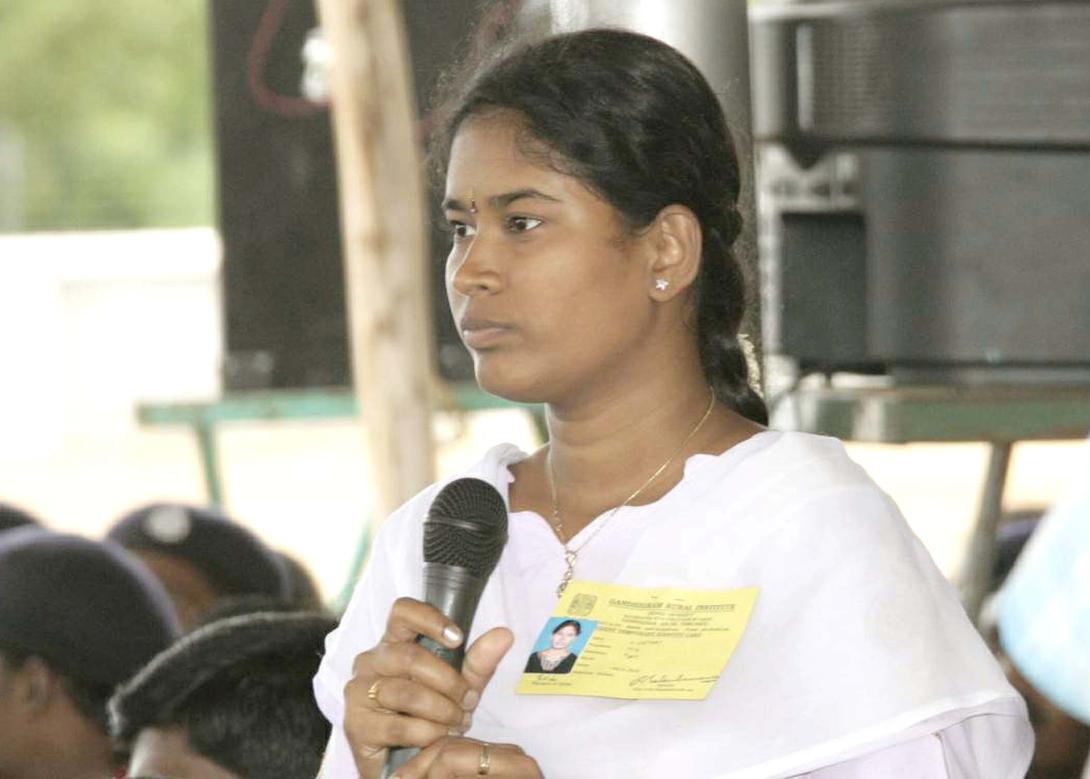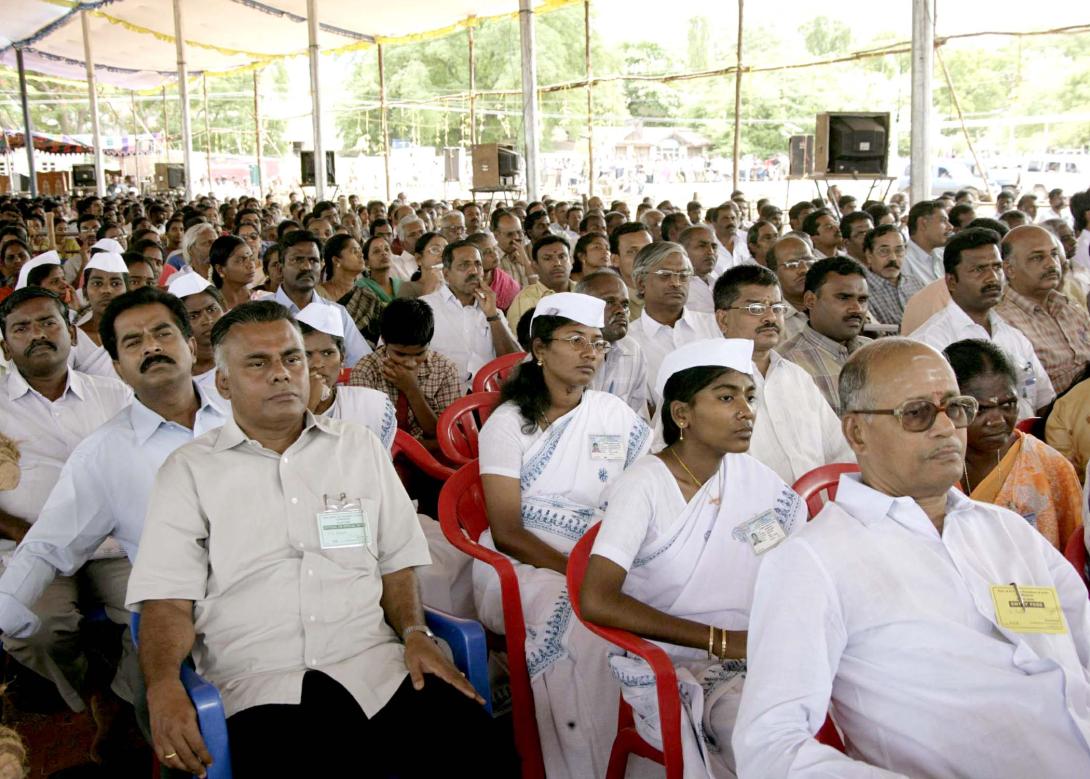Visit to Gandhigram Rural Institute Deemed University, Gandhigram, Dindigul, Tamil Nadu
Gandhigram : 23-09-2006
Rural Development and its multidimensions
Valamana Indiave Uruvakkuvom
I am delighted to visit the Gandhigram Rural Institute (GRI) located in the beautiful surroundings of Dindigul. My greetings to the Vice Chancellor, faculty members and students. GRI is a unique institution developing and implementing a village development model which is most suited for this region.
Unique Rural Institute
When I am in the midst of students and faculty members of GRI, I would like to recall important information about the origin of this institute. This is an institution founded by two Gandhians Dr. T.S. Soundram and Dr. G. Ramachandran. During the Satyagraha movement, Gandhiji advised the disciples to move into villages for community development tasks. This advice led the founders to choose the rural setting near Dindigul for establishing the rural development institute. Nation will always remember Dr. T.S. Soundram and Dr. G. Ramachandran for providing the guidance in establishing this institute including the visionary action in developing a rural education system. This has become very relevant today when India has a mission of transforming itself by 2020 as a developed nation, where seven hundred million people live in six hundred thousand villages.
GRI understands that empowering the rural people will ensure sustainable development harnessing the core competence of the particular region. I am sure GRI will have a mission of developing large number of rural clusters in this region. I am glad to know that the GRI has concentrated on the creation of a new cadre of rural professionals called action leaders capable of leading the rural development in the present socio-economic environment. It will be very useful to bring out a document the achievements of the action leaders with their experience.
Our National Mission ? Challenges
Our nation is going through a major challenge of uplifting of 220 million people who are below the poverty line. They need habitat, they need food, they need health care, and they need education and employment finally resulting in a good life. Our GDP is growing at more than 8% per annum. Whereas, the economists suggest that to uplift the people below poverty line, our economy has to grow at the rate of 10% per annum consistently, for over a decade.
Integrated Action for Development
To meet the needs of one billion people whose number will further increase, we have a mission of transforming India into a developed nation. We have identified five areas where India has core competencies for integrated action: (1) Agriculture and food processing (2) Reliable and Quality Electric power, Surface transport and Infrastructure for all parts of the country. (3) Education and Healthcare (4) Information and Communication Technology (5) Strategic sectors. These five areas are closely inter-related and when effectively addressed, would lead to food, economic, energy and national security.
Engines for Growth
Emphasis should be on full utilization of natural and human resources of the region to meet the demands of the modern society. We should also remember that about 50% of our population is young people, with aspirations for a better life. Value addition to Agriculture, Manufacturing and Service sectors of the economy, building on the regions? core competencies and technologies, will lead to high income growth rate and employment potential. The engines for growth will be launching of the five national missions viz. water, energy, education and skills, infrastructure and employment generation, which will enable achievement of 10% GDP growth rate per annum, sustainable for a minimum period of ten years.
Participation of GRI in rural development
I am glad to know that GRI (Deemed University) and the Gandhigram Rural Trust over the years have demonstrated a number of successful rural development projects. For example, GRI has brought out a number of value added products from coconuts and grapes. They have found 17 value added products from grapes alone. Working with 350 medicinal plants available in Sirumalai region, they have processed and produced various herbal products such as soaps, medicines, using high quality processing and quality assurance facilities. Another area where R & D has gone in is in the development 130 shades of natural dies. With these products, now Gandhigram has evolved a vision for the future: 1) in developing floriculture leading to preparation of aromatic products and 2) strengthening the handloom saree manufacturing industry using the natural dies and advanced computer aided design. GRI has created 300 self-help groups in the region for providing necessary support to the rural development including micro-finance. With the infrastructure and knowledge base created, corporate houses are now being attracted for participation in the rural development tasks in this region. These efforts will enhance the employment potential and revenue generation capacity of the farmers leading to better quality of their life. Thus, I can see that the focus, education and evolution of systems in GRI may lead to creation of PURA (Providing Urban Amenities in Rural Areas). As you will be knowing the missions of PURA centres around 3 connectivities namely physical connectivity, electronic connectivity, knowledge connectivity leading to economic connectivity. Since GRI is going to start a floriculture mission, I have few suggestions for you.
Friends, Certain variety of roses, even though beautiful, do not emit any fragrance. I desire, that a unique variety of rose should emanate from India, combining flowering beauty and fragrance. Since plant genetic science is advanced, time has now come to genetically design the flowers that will have unique shape, petal size, pleasing colours with longer shelf-life and of course pleasing fragrance. A rose that will be equally attractive to the humans and the bees. Jasmine which comes out in the southern part of India has a beauty and fragrance. With its experience GRI may like to take up evolving the rose with fragrance for national and international market. This will also assist your mission of producing aromatic products.
Mounting research programmes for developing indigenous floriculture products which can meet the international standards and nominating agencies for producing quality planting materials which will have enhanced shelf-life. The researchers must also address the problem of organic farming.
University's unique degree Course
I am also happy that GRI is starting a B.Tech Habitat course useful to system engineering professionals. This programme may consolidate the experiences of GRI, DRI Chitrakoot and IRMA Anand in designing the B.Tech Habitat Course. This programme will be able to create technical cadres capable of designing and managing habitat related issues, development of rural structures in areas such as irrigation, storage of water and community model infrastructure, planning for rural road network, energy systems, information connectivity, management of water supply, sanitation, waste cycling and above all creation and maintenance of hazard free habitat.
I would suggest certain employment generation models can be taken up as a part of B.Tech Habitat course using the knowledge base created in agro-processing, floriculture and handloom products. GRI has also taken initiative recently for engineering the products for making them acceptable in the national and international market. In this connection, I would like to share with you the experience of one village-one product concept used by Madhya Pradesh in collaboration with JETRO of Japan.
Indo-Japanese Collaborative Experience: A handicraft promotion work is taking place at Chhindwara and Seoni in Madhya Pradesh, as a State Government, Central Government and JETRO of Japan collaborative venture. Here the development of interior life style articles is taking place with the intervention of JETRO technical experts. After prototypes are made, the product is being sent to Japan for presentation in exhibitions for getting a feedback. The feedback is used to further improve the product for making it acceptable for sale in the international market. A similar model has been followed between Thailand and Japan which has resulted in the development of 26 products being produced in 26 villages with an annual turn-over of Rs. 300 crores. GRI should spread the message of one product for one village in all districts around GRI.
GRI model
When I look at the activities of GRI, I find that this institute is aiming at a unique economic and social empowerment model for the development of rural areas. The institute is working towards the evolution of sustainable development based on indigenous and traditional technology, knowledge systems and local talents. The research work by the institute through field studies facilitates the development of replicable and tangible model for achieving self-reliance in villages. The programme aims at income generation through value addition, innovative agricultural practices, inculcating scientific temper among the villagers, improvement of health and hygiene, striving towards 100% literacy. Apart from all these developmental activities the institute can facilitate a cohesive conflict free society as is followed in Chitrakoot, Madhya Pradesh. There, I was informed that eighty villages around Chitrakoot are almost litigation free. The villagers have unanimously decided that no dispute will find its way to court. The differences will be sorted out amicably in the village itself. All these have been accomplished through Deendayal Research Institute?s ?samaj shilpi dampati? concept of counseling and intervention promoted by them. I am sure the Samaj Shilpis assembled here trained by GRI can study this experience and make this region conflict free. For this we have to embark on value based education which inculcates social responsibility among all students.
I would like to share with you the actions of certain institutions who are fulfilling the corporate social responsibility in a big way.
Fulfilling corporate social responsibility
Recently, I participated in the conferment of TERI Corporate Awards 2004-2005. There I presented the award to a food manufacturing industry called Sakthi Masala (P) Ltd among many awards. This Unit produces curry powders, pappad, pickles and other food products. Over the last ten years the company has been actively recruiting disabled people for their establishment and today one third of the employees in the company are differently abled. The company also runs an exclusive project Sakthi Rehabilitation Centre, a home which provides specialized training and physiotherapy especially to children to make them feel confident and allow them to discover their unidentified potentials. Children with cerebral palsy, multiple disabilities and mental retardation are treated free of cost. All the differently abled employees are also given periodic therapy and counseling. The company uses non-conventional energy resources thereby contributing to the energy independence of the nation. The company gives employment to over 200 rural people especially the destitute, widows and women.
Conclusion
In conclusion I would like to suggest two missions for GRI.
Evolution of Enlightened Citizenship: GRI indeed is well positioned for contributing in the evolution of enlightened citizens. To transform into enlightened citizens the education system has to build the capability in employment generation, students should think beyond religion and build brotherhood through the spiritual doctrines of various religions. The third requirement is GRI should impart value based education.
Enhancing Percapita Income: Since GRI is in Dindigul area, the university can take up a mission of eliminating poverty which means the per capita income of Dindigul district has to be doubled in the next three years. This is possible only through the entrepreneurship created by the GRI among the youth who will become employment generators instead of employment seekers. I greet all the Samaj Shilpis assembled here and wish them success in their mission of societal upliftment.
May God bless you.

